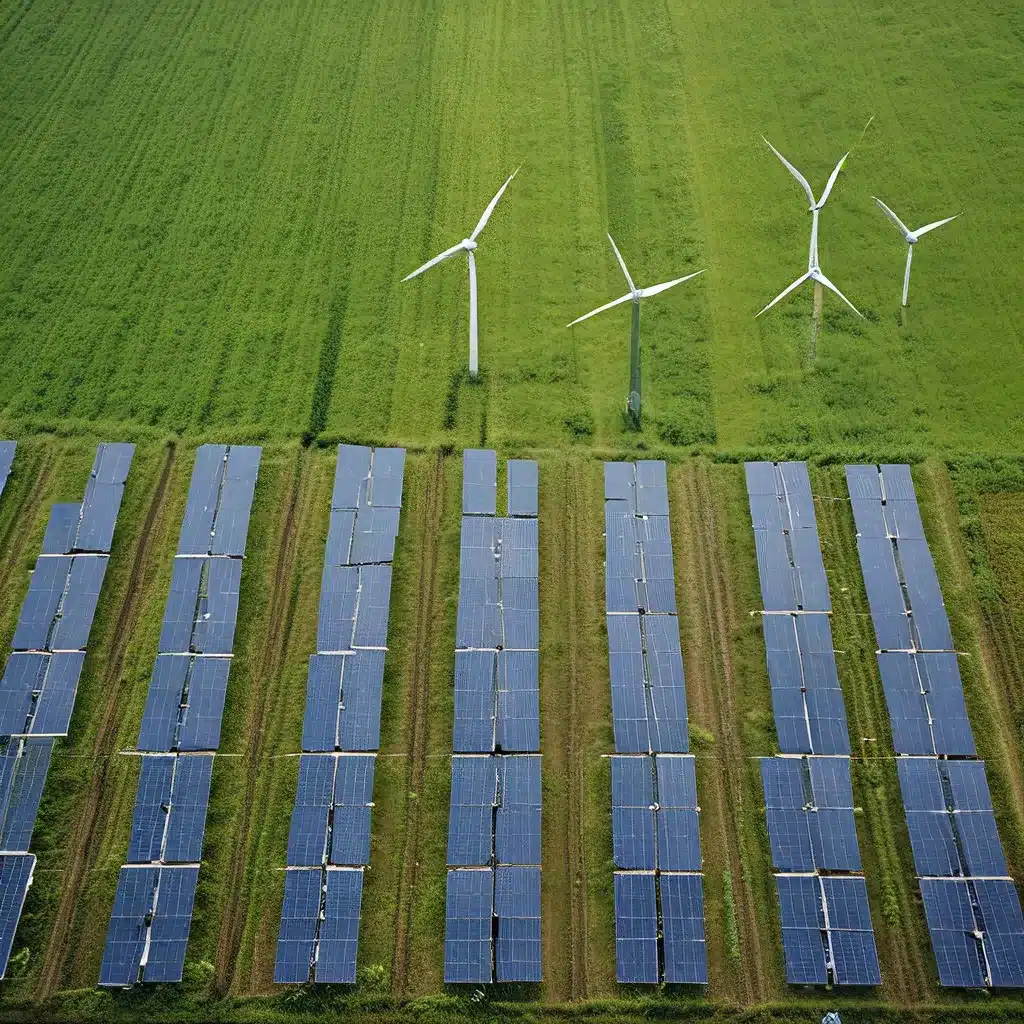
As someone deeply fascinated by the intersection of renewable energy and sustainable agriculture, I’ve been on a mission to navigate the complex web of policies, regulations, and incentives that shape this dynamic landscape. It’s a captivating journey filled with both challenges and opportunities, and I’m excited to share my insights with you.
Unpacking the Policy Puzzle
When it comes to harnessing the power of renewable energy in agriculture, the policy ecosystem is akin to a labyrinth – intricate, constantly evolving, and often fraught with unexpected twists and turns. As the OECD has highlighted, the successful implementation of reforms in this arena hinges on a delicate balance of factors, from evidence-based problem-solving to strategic stakeholder engagement.
One of the key policy areas that has caught my attention is the regulation and pricing of water usage in agriculture. It’s a contentious issue, with competing interests and perspectives at play. On the one hand, subsidies and outdated pricing structures have long kept the cost of water artificially low, incentivizing wasteful practices and hampering the adoption of more sustainable irrigation technologies. As the World Bank has suggested, reforming these economic incentives is crucial to driving meaningful change.
On the other hand, the regulation of groundwater usage presents its own set of challenges. Balancing the need for conservation with the practical realities faced by farmers is no easy feat, and as researchers from the OECD and Sciences Po have pointed out, it often requires a delicate and adaptable approach to policy-making.
Embracing the Power of Renewable Energy
But it’s not all doom and gloom. The renewable energy revolution is sweeping across the agricultural landscape, offering promising solutions to some of the sector’s most pressing challenges. From solar-powered irrigation systems to on-farm biogas plants, the potential for renewable energy to transform the way we grow our food is nothing short of astounding.
Just imagine a world where farmers can harness the abundant sunlight and wind to power their operations, reducing their reliance on fossil fuels and cutting their energy costs in the process. Or a future where anaerobic digesters turn agricultural waste into clean, affordable electricity, creating a virtuous cycle of sustainability.
Of course, the path to this renewable energy-powered utopia is not without its obstacles. Navigating the complex web of incentives, regulations, and policy frameworks can be a daunting task, even for the most seasoned agricultural professionals. But I believe that with the right mix of strategic planning, stakeholder collaboration, and policy innovation, we can unlock the full potential of renewable energy in agriculture.
Navigating the Policy Landscape
One of the key factors that will determine the success of renewable energy adoption in agriculture is the ability of policymakers to create a supportive and flexible policy environment. As the World Bank has suggested, this may involve a range of measures, from carefully sequencing policy reforms to ensuring that governance structures are aligned with the desired outcomes.
For example, the removal of subsidies that negatively impact water resources could be accompanied by the introduction of targeted incentives for the adoption of water-efficient technologies. Or the regulation of groundwater usage could be coupled with investment in agricultural extension services, empowering farmers to make more informed decisions about resource management.
The key, it seems, is to adopt a flexible and adaptive approach to policy-making, one that is responsive to the evolving needs and challenges faced by the agricultural sector. This might involve continuous research, education, and stakeholder engagement to ensure that policies remain relevant and effective over time.
Embracing the Complexity
As I delve deeper into this topic, I’m struck by the inherent complexity of the policy ecosystem surrounding renewable energy in agriculture. It’s a realm where competing priorities, diverse stakeholder interests, and evolving scientific understanding all converge, creating a tapestry of challenges and opportunities.
But rather than being daunted by this complexity, I’ve learned to embrace it. After all, it’s in the interplay of these moving parts that the most innovative and impactful solutions often emerge. By exploring multiple perspectives, acknowledging uncertainty, and remaining open to new ideas, I believe we can navigate this labyrinth and uncover the pathways to a more sustainable and resilient agricultural future.
The Road Ahead
As I reflect on my journey so far, I can’t help but be excited about the possibilities that lie ahead. Renewable energy solutions hold immense promise for the agricultural sector, not only in terms of reducing environmental impact but also in fostering economic resilience and social well-being.
And while the policy landscape may seem daunting at times, I’m heartened by the growing momentum and the collective efforts of policymakers, researchers, and farmers to chart a course towards a more sustainable future. It’s a journey filled with complexities, to be sure, but also with the potential for groundbreaking innovation and meaningful change.
So, as I continue to navigate this ever-evolving policy ecosystem, I invite you to join me. Together, let’s explore the frontiers of renewable energy in agriculture, push the boundaries of what’s possible, and create a more resilient and sustainable food system for generations to come.

